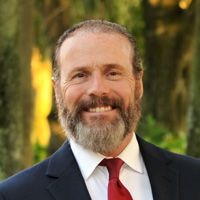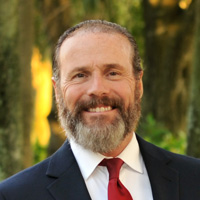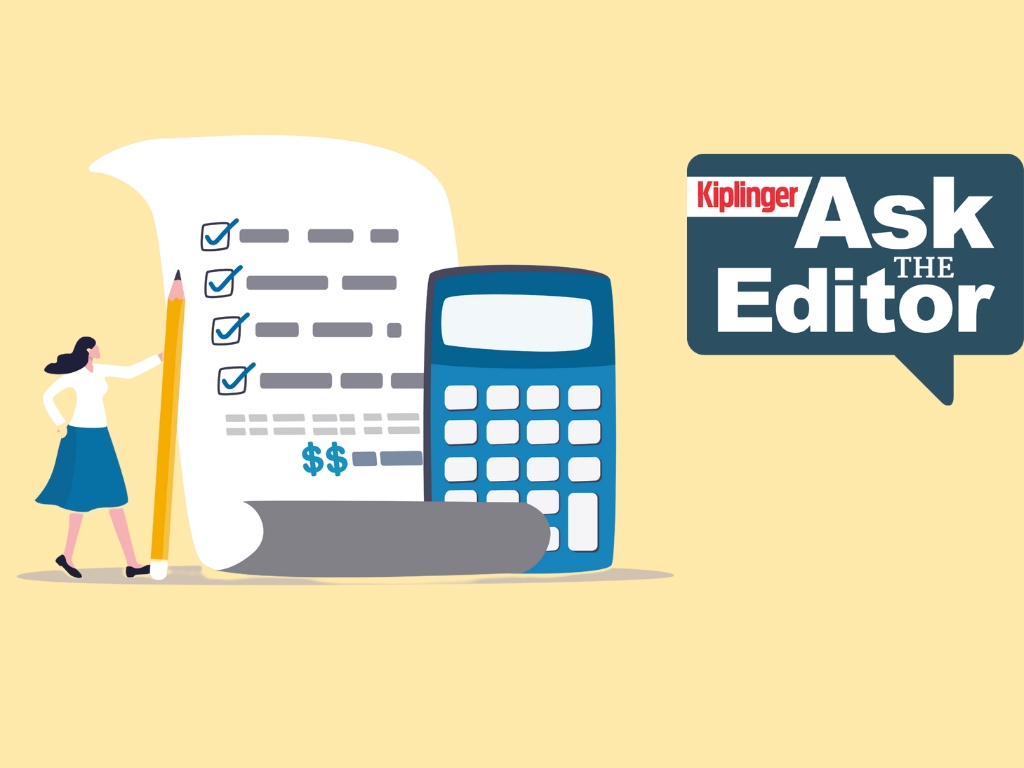Retirement’s Biggest Risks Come after You Reach the Summit
You’ve climbed the saving mountain, but the danger is just beginning. Here’s how to trek to long-term income security.


I love a good metaphor.
That three-legged stool of retirement planning that old-timers so often refer to? Good stuff.
Sure, with pensions disappearing, Social Security getting wobblier every year and personal savings often coming up short, that stool is a bit shakier these days. Still, the image makes a point.
From just $107.88 $24.99 for Kiplinger Personal Finance
Become a smarter, better informed investor. Subscribe from just $107.88 $24.99, plus get up to 4 Special Issues

Sign up for Kiplinger’s Free Newsletters
Profit and prosper with the best of expert advice on investing, taxes, retirement, personal finance and more - straight to your e-mail.
Profit and prosper with the best of expert advice - straight to your e-mail.
And who can resist a sports metaphor? My favorite is the retirement red zone – when you’re close to the goal line and every move counts, you and your team must work even harder to protect your money.
But the best way I know of to describe the challenges we all face in retirement planning is to compare it to climbing Mount Everest ... and then getting back down.
Many men and women have imagined scaling that mountain and how it would feel to reach the peak: the glow, the glory, the sense of satisfaction you’d have accomplishing such a goal.
It’s interesting, though, that people always picture themselves on their way up the mountain, and at the top, but not necessarily on the trip down. And that’s where most people get hurt or lose their lives.
Accumulation is the easy part
It’s not so very different from working and saving for retirement. We all picture that day when we’ll have stashed away enough money to call it quits. Some of us get really good at the accumulation stage – the journey up that retirement mountain. But we’re not necessarily prepared for what comes after that: making the money last for the rest of our lives.
That’s the concern I hear most often from the people I meet through my workshops or in my office. They worry – rightly so – that they’ll outlive their savings.
A retirement lesson from Everest
The concept of summiting and descending Mount Everest can teach us a lot: The strategies you use to get to the top will not be the same ones that will get you down safely.
The main goal for mountain climbing is “Don’t lose your life.” The mantra for your retirement journey should be “Don’t lose your money.”
That seems obvious, but it’s amazing how much risk pre-retirees – people who are just five to seven years away from their goal retirement age – will keep in their portfolio.
Clearly, you can’t climb a mountain without risk – and you can’t beat inflation without the chance of losing some money. These days, even the savings instruments with the least amount of risk - such as certificates of deposit or 13-week Treasury bills, for example – may, in a sense, lose money as they could lose purchasing power due to higher rates of inflation than the net return on these savings instruments. You’re just getting poorer more slowly. Which leads many to jump to what I call risk-reward investments – marketable securities, such as stocks, bonds, gold, traded real estate trusts, mutual funds, etc.
This kind of investing certainly gives you the opportunity to create enough long-term growth to beat inflation. However, there can be wild, cyclical swings in the market (as we saw in 2000 through 2002, and again in 2008). The markets are up right now, but if we go into another market correction, these investors are going to be in the precarious situation of potentially losing a significant portion of their savings.
Balancing risk and reward
But there is a middle-ground financial vehicle, where you can mitigate risk and still come out OK. For instance, fixed index annuities can provide protection of your principal from market volatility while still allowing for potential gains based on market performance.
If you build your portfolio on a solid foundation of safe and liquid assets, a firm middle ground of these linked assets and a percentage of risk/reward investments that is based on the rule of 100 (100 minus your age), you should have a retirement income plan that can help you work toward your retirement goals.
The point is to focus on your retirement income, not just your net worth. If you’re only looking at your statement balances, you could be missing a big part of the picture. It doesn’t matter how much you have saved on any given day – it only counts if you’ll have that money when you need it.
Think of your financial professional as a Sherpa. You need someone to get you up the retirement mountain – accumulating money. But you’ll also need help during the preservation and distribution phase of your journey that is just as important.
A trusted financial professional can help get you there.
Kim Franke-Folstad contributed to this article
Investment Advisory Services offered through Retirement Wealth Advisors, (RWA) a Registered Investment Advisor. Educated Wealth Center and RWA are not affiliated. Investing involves risk including the potential loss of principal. No investment strategy can guarantee a profit or protect against loss in periods of declining values. Opinions expressed are subject to change without notice and are not intended as investment advice or to predict future performance. Past performance does not guarantee future results. Consult your financial professional before making any investment decision.
Annuity guarantees rely on the financial strength and claims-paying ability of the issuing insurer. Any comments regarding safe and secure investments, and guaranteed income streams refer only to fixed insurance products. They do not refer, in any way to securities or investment advisory products. Fixed Insurance and Annuity product guarantees are subject to the claims‐paying ability of the issuing company and are not offered by Retirement Wealth Advisors.
Profit and prosper with the best of Kiplinger's advice on investing, taxes, retirement, personal finance and much more. Delivered daily. Enter your email in the box and click Sign Me Up.

John Convery is the president and founder of The Educated Wealth Center, LLC. He has passed the series 65 securities exam and is a licensed insurance producer.
-
 Ask the Editor: Itemized Deductions
Ask the Editor: Itemized DeductionsAsk the Editor In this week's Ask the Editor Q&A, Joy Taylor answers questions on itemized deductions claimed on Schedule A of Form 1040
-
 9 Types of Insurance You Don't Need
9 Types of Insurance You Don't NeedFinancial Planning If you're paying for these types of insurance, you may be wasting your money. Here's what you need to know.
-
 Are You Putting Yourself Last? The Cost Could Be Your Retirement
Are You Putting Yourself Last? The Cost Could Be Your RetirementIf you're part of the sandwich generation, it's critical that you don't let the needs of your aging parents come at the expense of your future.
-
 Are You Putting Yourself Last? The Cost Could Be Your Retirement Security
Are You Putting Yourself Last? The Cost Could Be Your Retirement SecurityIf you're part of the sandwich generation, it's critical that you don't let the needs of your aging parents come at the expense of your future.
-
 I'm an Insurance Pro: It's Time to Prepare for Natural Disasters Like They Could Happen to You
I'm an Insurance Pro: It's Time to Prepare for Natural Disasters Like They Could Happen to YouYou can no longer have the mindset that "that won't happen here." Because it absolutely could. As we head into 2026, consider making a disaster plan.
-
 The Future of Philanthropy Is Female: How Women Will Lead a New Era in Charitable Giving
The Future of Philanthropy Is Female: How Women Will Lead a New Era in Charitable GivingWomen will soon be in charge of trillions in charitable capital, through divorce, inheritance and their own investments. Here's how to use your share for good.
-
 5 Smart Things to Do With Your Year-End Bonus, From a Financial Professional
5 Smart Things to Do With Your Year-End Bonus, From a Financial ProfessionalAfter you indulge your urge to splurge on a treat, consider doing adult things with the extra cash, like paying down debt, but also setting up a "fun fund."
-
 Are You a Gen X Investor? Here's How You Can Protect Your Portfolio From an AI Bubble
Are You a Gen X Investor? Here's How You Can Protect Your Portfolio From an AI BubbleAmid talk of an AI bubble, what's the best course of action for investors in their 50s and 60s, whose retirement savings are at risk from major market declines?
-
 Hey, Retirees: Put Your Charitable Gifts in a Donor-Advised Fund (and Enjoy Your Tax Break)
Hey, Retirees: Put Your Charitable Gifts in a Donor-Advised Fund (and Enjoy Your Tax Break)A donor-advised fund is a simple (really!), tax-smart strategy that lets you contribute a large, tax-deductible gift now and then distribute grants over time.
-
 If You're a U.S. Retiree Living in Portugal, Your Tax Plan Needs a Post-NHR Strategy ASAP
If You're a U.S. Retiree Living in Portugal, Your Tax Plan Needs a Post-NHR Strategy ASAPWhen your 10-year Non-Habitual Resident tax break ends, you could see your tax rate soar. Take steps to plan for this change well before the NHR window closes.
-
 Could Target-Date Funds With Built-In Income Guarantees Be the Next Evolution in Retirement Planning?
Could Target-Date Funds With Built-In Income Guarantees Be the Next Evolution in Retirement Planning?With target-date funds falling short on income certainty, retirement plans should integrate guaranteed income solutions. Here is what participants can do.